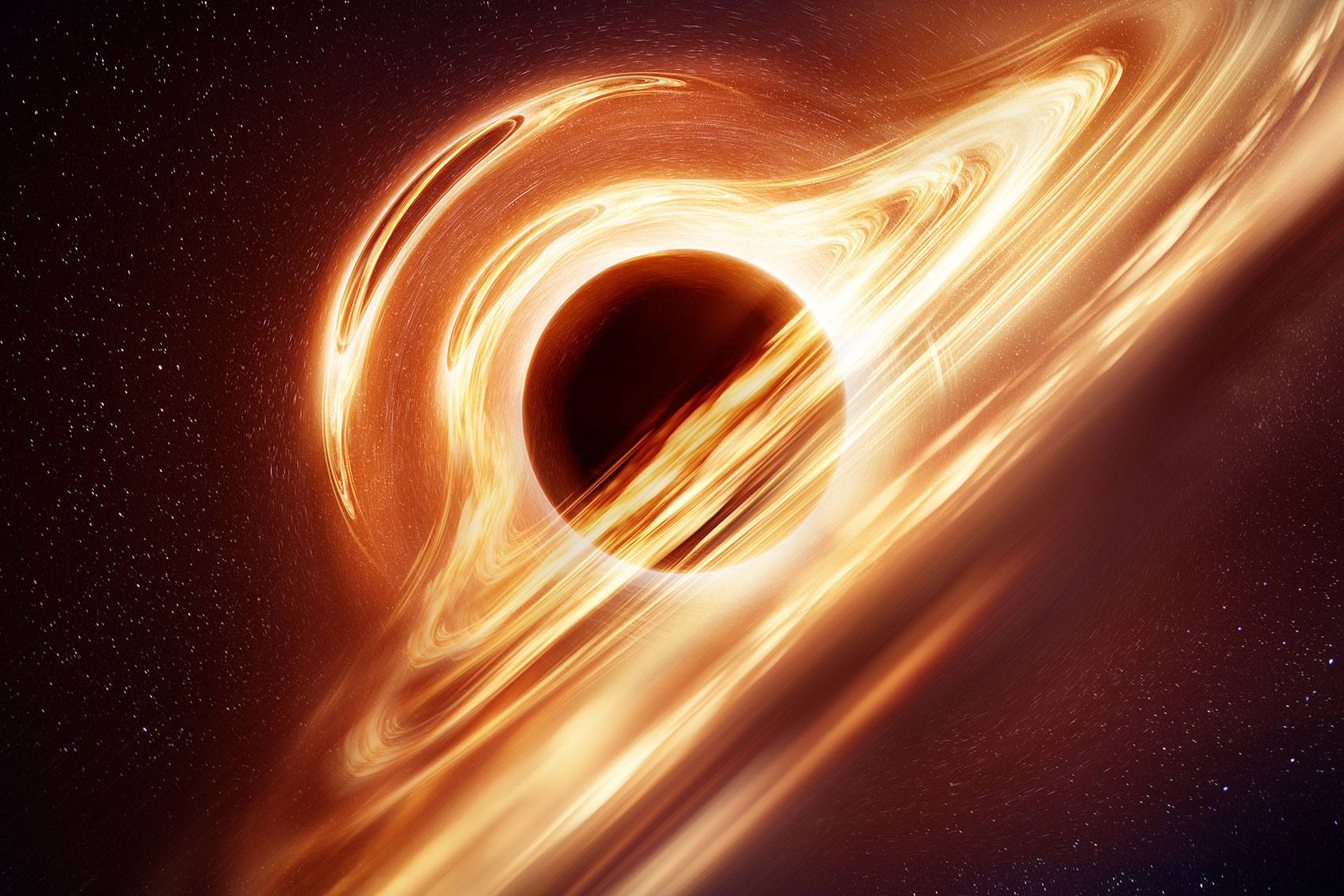In human culture, our young typically reach a moment in life when they choose to leave their homes and forge out on their own. Do stellar objects like black holes feel the same yearning for independence?
“This has been predicted for more than 50 years, that these black holes could once in a while be ejected from galaxies.”
For the last 50 years, astronomers have speculated that some supermassive black holes might “run away” from their home galaxies given the right conditions. Now, astronomers believe they have discovered a strong candidate for a supermassive black hole that has done just that, according to new research published on the preprint server arXiv.org, which has been accepted for publication in The Astrophysical Journal.
“This has been predicted for more than 50 years, that these black holes could once in a while be ejected from galaxies,” Pieter van Dokkum, a professor of physics and astronomy at Yale University, told Salon. “There have been some candidates already, and this is also just a candidate until we are 100 percent sure that it is a black hole, but it’s a good one and it’s also the only one so far that has been found really outside of the galaxy where it’s already been fully ejected.”
Black holes are relatively common in the universe. Indeed, many stars faintly larger than our sun will end their lives as black holes. Contrary to popular belief, they aren’t terrorizing objects that “suck” matter in indiscriminately — rather, they behave just like any other star-size object, albeit with an event horizon past which no matter may escape. If our sun were to suddenly be replaced by a black hole of the same mass, the planets in our solar system would continue to orbit comfortably in the same positions.
But supermassive black holes are something much more rare. Typically having the mass of hundreds of millions or billions of suns, such objects form the centers of just about all observed galaxies. These massive objects appear to eat stars and other stellar debris with alarming regularity. Just this week, astronomers observed a massive cloud of gas orbiting very close to our galaxy’s supermassive black hole, which is predicted to swallow the gas cloud by 2036.
The incredible amount of mass that supermassive black holes possess means that they are typically gravitationally bound to billions of stars. Occasionally, galactic centers might have two or more supermassive black holes orbiting each other in close proximity. Finding one that escaped from its parent galaxy would be an odd discovery indeed.
Dokkum and his colleagues have the Hubble Space Telescope to thank for this peculiar discovery, as the massive observatory caught a bright streak of light when astronomers were observing the dwarf galaxy RCP 28, which is about 7.5 billion light-years from Earth. In a follow-up observation, astronomers found that the streak appeared to measure more than 200,000 light-years long, which is twice the width of the Milky Way. It also appeared to trail a black hole that is estimated to measure 20 million times the mass of the Sun, and is moving at 4,500 times the speed of sound away from its home galaxy.
Indeed, the immense speed was a big clue to astronomers that this was in fact a supermassive black hole.
Want more health and science stories in your inbox? Subscribe to Salon’s weekly newsletter The Vulgar Scientist.
“The main thing is that we could estimate how fast it’s going — 1,600 kilometers per second — and that it’s hard to come up with anything else that would move that fast,” Dokkum said. “We see these dots at the tip of this long trail of stars, and it’s just hard to come up with anything else.”
“During their final plunge, [gravitational] waves are emitted in a preferred direction giving the remnant black hole a kick in the opposite direction, like the rocket effect.”
Dokkum emphasized something like this has never been seen before and it’s certainly “unique.”
In 2007, Harvard astronomer Avi Loeb published a paper in the journal Physical Review Letters, predicting observable signatures of a runaway supermassive black hole, such as speed. Typically, supermassive black holes reside at the center of a galaxy. For example, Sagittarius A* is located at the center of the Milky Way galaxy.
“But when two galaxies merge their black holes come together and eventually coalesce to become a single black hole through the emission of gravitational waves,” Loeb told Salon. “During their final plunge, [gravitational] waves are emitted in a preferred direction giving the remnant black hole a kick in the opposite direction, like the rocket effect.”
This can cause the black hole to recoil at speeds of thousands of kilometers per second.
“Another recoil mechanism is when a third black hole joins the merger, making the system unstable and kicking the lightest black hole out,” Loeb said. “Just as with humans, three-body systems are unstable.”
Loeb told Salon that the most recent paper shows “exciting evidence for a recoiled supermassive black hole moving at a speed of 1600 kilometers per second through the gas of its host galaxy.”
“At that speed it will escape from its host galaxy into intergalactic space in the future. The ejection occurred nearly 39 million years ago,” Loeb said. “At this time, the black hole creates a wake in the gas and induces star formation in that wake.”
The next step is to confirm that the object is indeed a runaway supermassive black hole. Once confirmed, astronomers will investigate how it can run at such incredible speed.
“There is also evidence for a pair of black holes, implying a three body system as the source of the ejection,” Loeb said.

